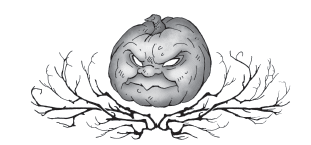
THE WHISTLEBRASS HORROR

 he misbegotten town of Whistlebrass is hidden away in a
forgotten corner of northern Vermont like a guilty secret or a
bloody knife buried under the floorboards.
he misbegotten town of Whistlebrass is hidden away in a
forgotten corner of northern Vermont like a guilty secret or a
bloody knife buried under the floorboards.
Whistlebrass was founded in 1790 on a craggy scrap of glacier torn land that both the Iroquois and Abenaki tribes considered cursed. It is ringed by heavily wooded mountains where hungry eyed creatures lie in wait, hoping for unwary hikers to wander off the paths. In September, the trees blaze briefly with color until north winds rip away their dying leaves. There is no blooming spring in Whistlebrass, just a few weeks of mud as the brutal arctic winters melt into muggy storm ravaged summers.
Narrow streets lined with weather beaten stone and shingled houses snake away from a central market square featuring an array of dejected little shops and a church with a tilted steeple. New England lore is rich with witchery, and nearly every sizable town can claim at least one haunted house. In Whistlebrass, it seems harder to find a house that doesn’t have a ghost in the attic, a skeleton in the closet, or residents with bats in their belfries. Whether it is the geographic isolation or simply something rotten at its core that has made this shunned spot a magnet for the supernatural, we do not know. Suffice it to say that Whistlebrass has always been a place of dark deeds and darker dreams. A place of maple syrup, madness, and monsters.
This is a harrowing tale of hauntings and horrors.
A tale that could only have happened in Whistlebrass.